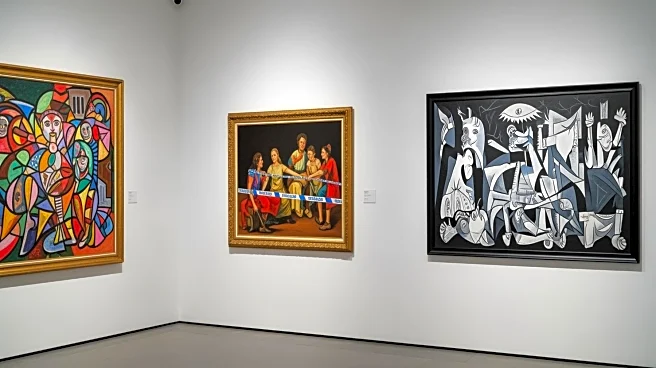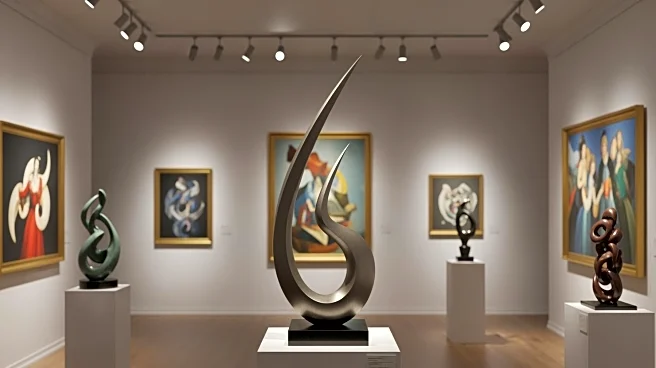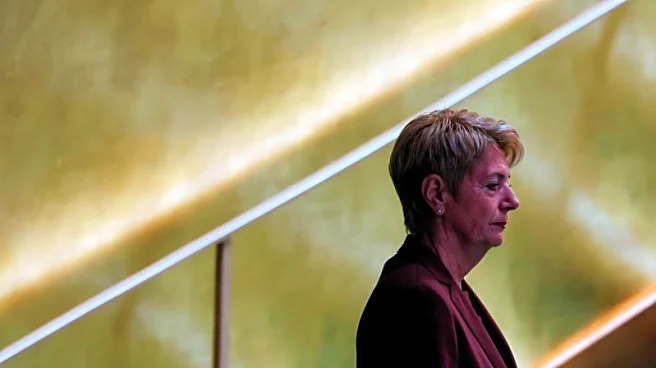What's Happening?
German police have dismantled a sophisticated art forgery ring that was attempting to sell counterfeit paintings attributed to renowned artists such as Pablo Picasso and Rembrandt. The operation, led by
Bavarian authorities, involved synchronized raids across Germany and Switzerland, resulting in the seizure of documents, mobile phones, and multiple suspected art forgeries. The alleged ringleader, a 77-year-old man from southwestern Germany, along with ten accomplices, faces charges of organized conspiracy to commit fraud. Among the forgeries was a copy of Rembrandt's 'De Staalmeesters,' which had been falsely claimed to be the original painting hanging in Amsterdam's Rijksmuseum. The group had also offered for sale at least 19 other forgeries, including works purportedly by Peter Paul Rubens, Anthony van Dyck, Joan Miro, Amedeo Modigliani, and Frida Kahlo, with asking prices ranging from 400,000 to 14 million euros.
Why It's Important?
The dismantling of this forgery ring highlights the ongoing challenges faced by the art world in protecting the integrity of valuable artworks. Art forgery not only undermines the market value of genuine pieces but also poses significant risks to collectors and institutions that may unknowingly acquire counterfeit works. The operation underscores the importance of vigilance and collaboration among international law enforcement agencies to combat art fraud. The case also raises awareness about the need for advanced authentication techniques and the role of technology in verifying the provenance of artworks. As the art market continues to grow, the potential financial losses from such fraudulent activities could have broader economic implications.
What's Next?
Authorities are continuing their investigation to determine if any of the counterfeit paintings were sold and to identify potential buyers who may have been deceived. The legal proceedings against the suspects will likely involve detailed forensic analysis of the seized artworks to establish their authenticity. The case may prompt art institutions and collectors to review their authentication processes and invest in more robust verification technologies. Additionally, the incident could lead to increased regulatory scrutiny and the development of international standards for art transactions to prevent similar frauds in the future.
Beyond the Headlines
This case highlights the ethical and legal dimensions of art forgery, including the impact on cultural heritage and the responsibilities of art dealers and auction houses in ensuring the authenticity of artworks. The incident may also influence public perception of the art market, potentially affecting investor confidence and the willingness of collectors to engage in high-value transactions. Long-term, the case could drive innovation in art authentication methods, such as blockchain technology, to provide more transparent and secure records of artwork provenance.













